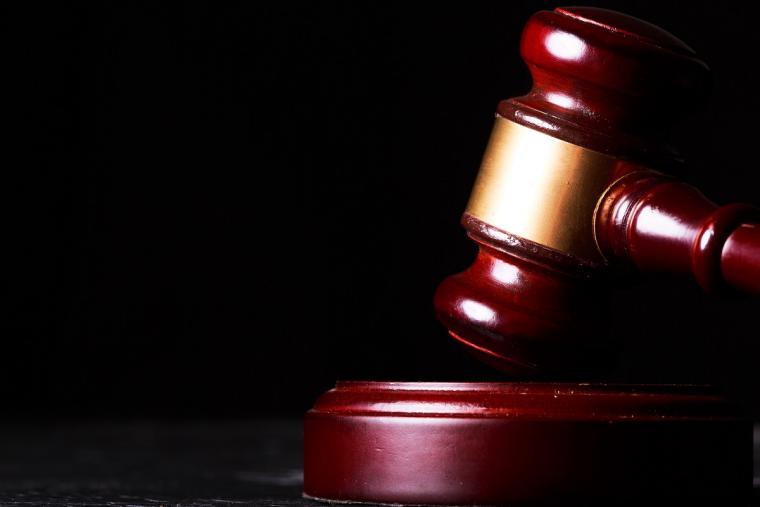

Athletes everywhere are standing up for their rights. From the college level (hello, NIL) to the gymnasts who came to prominence for standing up to Larry Nassar, it’s obvious that athletes want a say in their future. This has trickled down to the youth sports level, where more than 60 influential youth sports and nonprofit organizations have endorsed the Children’s Bill of Rights in Sports.
Drafted by the Aspen Institute’s Sports & Society Program to create a shared cultural understanding about the right of all kids to play and to develop through sports, the eight-point document was written with the assistance of human rights and sports policy experts to help guide everyone from program operators to policymakers.
“This is the era of athlete rights, from the college to Olympic levels,” Ivan Blumberg, a member of the drafting committee and CEO of Athletes for Hope (a nonprofit that helps athletes mobilize around causes that matter to them), said in a statement. “But what about the rights of children, the most vulnerable members of our sport ecosystem? We hope this declaration helps close gaps in the availability and quality of sport programs.”
More than 250 athletes from the Athletes for Hope network have called for the adoption of the Children’s Bill of Rights in Sports, which was released Aug. 12 on United Nations International Youth Day. Other members of the Aspen Institute working group included the Centre for Sport and Human Rights, the U.S. Center for SafeSport, the Power of Sport Lab, and the Center for Sport and the Law at the University of Baltimore School of Law.
The Children’s Bill of Rights in Sports identifies eight rights:
- The right to play sports
- The right to safe and healthy environments
- The right to qualified program leaders
- The right to developmentally appropriate play
- The right to share in the planning and delivery of their activities
- The right to an equal opportunity for personal growth
- The right to be treated with dignity
- The right to enjoy themselves
The Aspen Institute’s Project Play elaborates on each of those rights on a dedicated website — including guidance on how they can be used by key stakeholders, including grantmakers and sponsors, national sport organizations, parents and caregivers, youth, and policymakers. For community and school sports providers, there also is an editable template that can be used to review policies and practices, improve program quality and build a reputation as a child-centered program.
Project Play notes, however, that the Children’s Bill of Rights in Sports is not enforceable by law: “[It] issimply a resource created by a non-governmental organization that legislators can deploy as they see fit.”
All principles in the bill of rights were informed by a review of, among other domestic and international resources, the 1989 United Nations Convention on the Rights of the Child — the most widely adopted treaty in the world. The United States has signed but not ratified that treaty, which has helped develop children’s rights in sports declarations in other countries, according to the Aspen Institute.
“Youth and school sports are a massively disjointed space in this country, with hundreds of thousands of programs serving youth but with no real agreement on the guardrails,” said Tom Farrey, executive director of the Aspen Institute’s Sports & Society Program. “The Children’s Bill of Rights in Sports fills a major gap by defining the baseline experience that every child deserves in the care of adults, aligned with the human rights each of them is born with. It’s also a reminder that we need to make room for every child in this country to play sports.”
Indeed, much of Project Play’s efforts focus on creating more youth sports opportunities for children from low-income homes and finding ways to keep kids playing longer. According to an Aspen Institute survey, the average youth sports participant quits by age 11.
Organizations supporting the bill of rights include the U.S. Olympic & Paralympic Committee, YMCA of USA, the National Recreation and Park Association, Little League International, ESPN, the U.S. Tennis Association, the U.S. Soccer Federation, Under Armour, Hospital for Special Surgery, American College of Sports Medicine, UNICEF USA, DICK’S Sporting Goods Foundation, the MLB-MLBPA Youth Development Fund, the Sports & Fitness Industry Association, the National Lacrosse League, i9 Sports, USA Baseball, USA Hockey, USA Surfing, U.S. Figure Skating, USA Pentathlon, USA Biathlon and USA Gymnastics.
“The Children’s Rights in Sports initiative is one of the most important things we can do to expand participation and create a better sports experience for American youth,” said Dionne Koller, director of the Center for Sport and the Law at the University of Baltimore School of Law,” which was involved in drafting the new bill of rights. “These rights provide a framework for parents to evaluate programs, guideposts for coaches and administrators to structure their programs, a language for children to empower their participation, and insight for legislators to create meaningful youth sports policy. Every youth sports stakeholder will benefit from adopting a rights approach, and the societal payoff will be felt for decades to come.”

